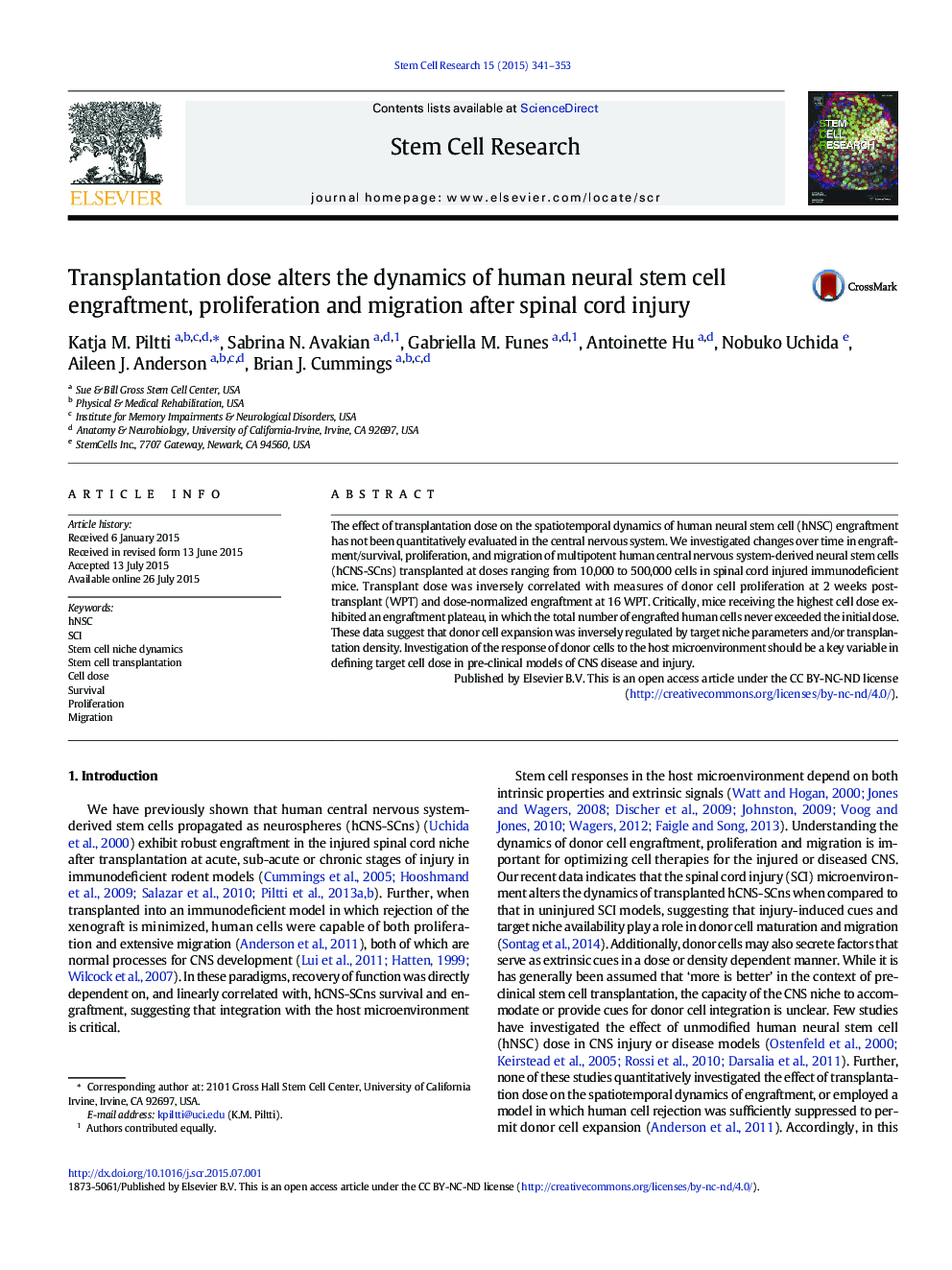| Article ID | Journal | Published Year | Pages | File Type |
|---|---|---|---|---|
| 2094142 | Stem Cell Research | 2015 | 13 Pages |
•Increasing transplant dose resulted in a plateau in donor cell engraftment.•Cell death did not increase with increasing dose.•Cell expansion and proliferation were inversely correlated with dose.•Regardless of dose, only a small proportion of hCNS-SCns remained mitotic (pH3+).
The effect of transplantation dose on the spatiotemporal dynamics of human neural stem cell (hNSC) engraftment has not been quantitatively evaluated in the central nervous system. We investigated changes over time in engraftment/survival, proliferation, and migration of multipotent human central nervous system-derived neural stem cells (hCNS-SCns) transplanted at doses ranging from 10,000 to 500,000 cells in spinal cord injured immunodeficient mice. Transplant dose was inversely correlated with measures of donor cell proliferation at 2 weeks post-transplant (WPT) and dose-normalized engraftment at 16 WPT. Critically, mice receiving the highest cell dose exhibited an engraftment plateau, in which the total number of engrafted human cells never exceeded the initial dose. These data suggest that donor cell expansion was inversely regulated by target niche parameters and/or transplantation density. Investigation of the response of donor cells to the host microenvironment should be a key variable in defining target cell dose in pre-clinical models of CNS disease and injury.
